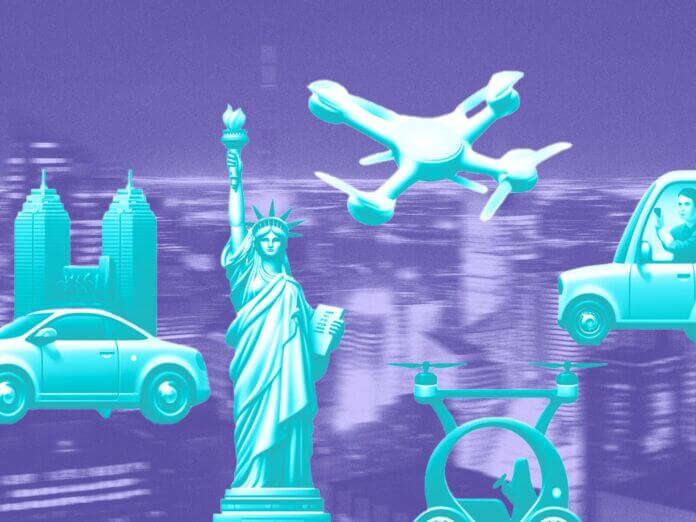
Brenna Lafferty Campbell – June 17, 2024
Collected at: https://www.iotforall.com/what-happened-at-smart-city-expo-usa-2024
May 22 and 23 were sunny and humid days on the lower east side of Manhattan. Inside Pier 36, a hall roughly the size of two gymnasiums was laid out for the impressive Smart City Expo USA. The expo showcased the ambition of cities, innovators, and entrepreneurs to create smarter, more efficient, and livable urban environments.
Attendees from Across the Globe
Representatives from multiple U.S. cities attended. Cities included Atlanta, Boston, Las Vegas, New Orleans, New York, Pittsburgh, San Jose, and of course, New York. They were joined by representatives from European, South American, African, and Asian cities.
Exhibitors included big names such as Accenture, Dell, Google, Motorola, Oracle, and NVIDIA, organizations for mayors and urban developers, and 30 entrepreneurs hosted by the New York City Economic Development Corporation, including several start-ups managed by graduates of NYU’s Tandon School of Engineering.
Speakers & Topics
Speakers included panels of United States’ mayors, CIOs, CTOs, and many of the exhibitors. Artificial Intelligence was a hot topic, with a lot of conversation about the ethics of generative AI, how to leverage AI analysis of pure data, and the myriad applications for AI in cities, from translating communications into multiple languages to identifying pot holes to pest management.
American mayors often discussed inclusivity; for instance, providing inclusive access to technology or creating financially inclusive cities. Other interests included clean energy, sustainability, optimizing public services, transportation, cybersecurity, and safety / emergency management.
As the host city, New York showcased its massive network of people devoted to managing and improving the city’s infrastructure. New York City representatives spoke alongside academics, students, and non-profit representatives, and their collaborative spirit–and sheer number–emphasized the community they have developed to drive the mission of the city and adopt new technology in support of it.
New York’s Smart Policies
Over the last several years, both New York City and New York State have created policies and plans to enhance livability and promote climate responsibility. Key issues include cost of living, job availability, transportation, education, food scarcity, and air quality. Solutions are designed to be climate conscious, cost effective, and equitable.
One of the region’s main goals is carbon neutrality. The 2019 New York State Climate Act mandates a reduction in economy-wide greenhouse gas emissions by 40 percent by 2030 and at least 85 percent by 2050, based on 1990 levels. Complementing this, New York City’s Climate Action Plan aims to achieve carbon neutrality by 2060. Activities to meet these goals were, of course, interrupted or made more complicated by the COVID-19 pandemic.
The pandemic significantly impacted New York City’s economy and exposed gaps in the city’s infrastructure, specifically related to equitable access to resources and opportunities. One response is the city’s Making New York Work for Everyone program. Launched in 2022, it aims to revitalize business districts, enhance transportation and remote working options, and foster inclusive, forward-thinking growth to unlock the potential of all residents.
The most recent initiative, the “Harbor of the Future,” announced by New York City Mayor, Eric Adams, earlier this year, addresses the goals of both carbon neutrality and job growth by creating programs that develop a strong green economy in the city.
In leveraging the economic potential of reducing emissions, the city will accelerate job growth as it builds a more sustainable city. This initiative is projected to support 400,000 green economy jobs in New York City by 2040.
NYC Harbor of the Future: A Green Economy Action Plan
The New York City Harbor of the Future initiatives are designed to transform the city’s historic harbor areas into dynamic centers for green economy growth and innovation.
A notable example is the $100 million investment to convert the former Brooklyn Army Terminal in Sunset Park into a Climate Innovation Hub. Similarly, the Hunts Point Produce Market, a major supplier of fresh produce for the city, is undergoing a $650 million modernization project.
Governors Island now is home to the Center for Climate Solutions that has a Living Lab for research and development of equitable climate solutions. Also on Governors Island is the New York Climate Exchange consortium, which serves as an education and training hub to foster green jobs for New Yorkers.
The Brooklyn Navy Yard is home to over 500 manufacturing and innovation businesses across 300 acres, and is actively seeking proposals for clean energy use on the waterfront to combat climate change. The Science Park and Research Campus (SPARC) in Kips Bay, housed at the former Hunter College Brookdale campus, will be dedicated to job creation and education in life sciences, healthcare, and public health.
Additionally, the Staten Island North Shore Action Plan aims to create a two-mile waterfront esplanade, providing space for businesses and improving access to the waterfront.
New Technology and Test Labs
Conferences like the Smart City Expo USA bring like-minded people together, but both city managers and innovators remain challenged to connect with the right people. City managers want to be sure their solution research is accurate and complete and innovators struggle to know which organizations would benefit from their ideas.
To help keep information flowing, New York City has established test beds and organizational partnerships that match solutions to potential users. The Living Lab on Governors Island has become a proving ground for urban climate solutions, utilizing the island’s unique environment as a small-scale city space for testing and demonstration.
Additionally, New York City’s Smart City Testbed invites applicants to submit their innovations which city officials work to match to the needs of city departments for trial. Interested parties can apply at nyc.gov/testbed.
U.S. federal procurement has evolved too, and some Requests for Proposal related to cities are now available on challenge.gov, where cities can describe the problems they want to solve as opposed to the solutions they require. Using an outcome-based model enables innovators to share their ideas and potentially create new processes to solve problems.

Leave a Reply